Kudumulu | Undrallu Recipe | Vinayaka Chavithi Prasadam
Updated: August 23, 2024, By Swasthi
Kudumulu also known as Undrallu are steamed rice balls from Andhra and Telangana cuisine. These are festive dumplings offered to the Lord Ganesha during Vinayaka Chavithi. A lot of people also have the tradition of offering these to Goddess Varalakshmi and Durga during Varalakshmi vratham and Navaratri puja.
In this post I share how to make them the traditional way. In our families we use the terms kudumulu and undrallu interchangeably, for both sweet and savory versions. However I have seen my Telugu speaking friends refer the sweet stuffed balls as kudumulu while the savory balls (no-stuffed) as undrallu.
About Kudumulu – Undrallu
To be precise, here I am sharing the savory version made with rice rava. For the stuffed version, check this poornam kudumulu and for the sweet non-stuffed undrallu, refer this bellam undrallu.
Traditionally, rice is soaked and ground to a coarse rava to make these. Homemade rice rava works the best here and there is no substitute for it. You can’t use any other kind of rava like idli rava or semolina.
I have tried these in the past with store bought rice flour and they turn out alright but not as good as the traditional version. I followed the same method used for Modak. The coarse texture of the rice rava prevents them from turning sticky and hard.
So I highly recommend making the rice rava as shown below. If you are a beginner you may check out my detailed guide here on how to make rice rava at home.
Growing up my Mom always made these with an addition of soaked chana dal or black eyed peas (alasandalu) or grated fresh coconut (kobbari kudumulu). Use what you like or prefer.
Expert Tip
The taste and texture of undrallu depends on the kind of rice used. Aged rice makes for a non-sticky and delicious balls. Rice from the new harvest is ok, but reduce the quantity of water by ¼ cup. They tend to be sticky and a bit hard, especially if you overcook them.
Aged basmati rice used for biryani or sona masuri is best in my experience.
Photo Guide
Step by Step Instructions
Make Rice Rava
1. Rinse 1 cup rice thrice and drain to a colander. You can also soak the rice for 2 hours and use. Soaking helps to blend the rice easily.
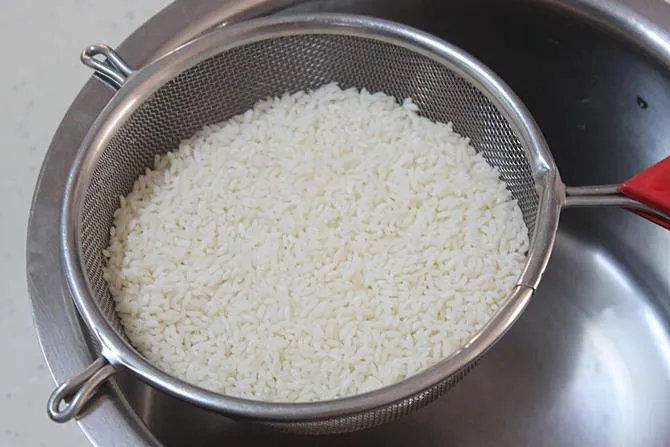
2. Sun dry or fan dry rice on a cloth till completely dry.
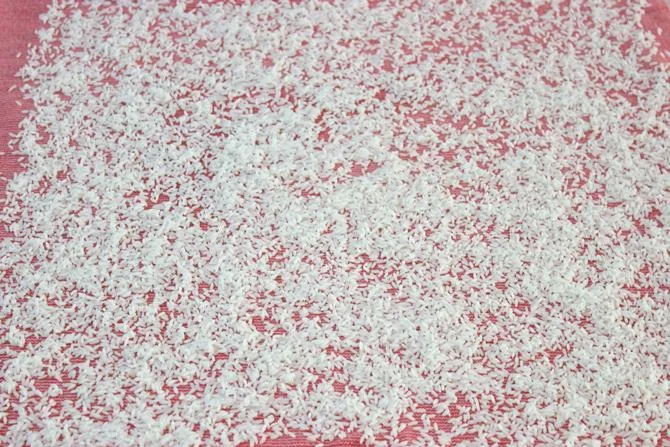
3. Blend/grind in a dry mixer jar to a slightly coarse texture. Make sure rice rava is moisture free before you proceed. 1 cup rice will yield you more than 1 cup rava. For this recipe we need only 1 cup rava. So measure it and set aside. Store the excess in air tight jar in the fridge and use up when you make punugulu.
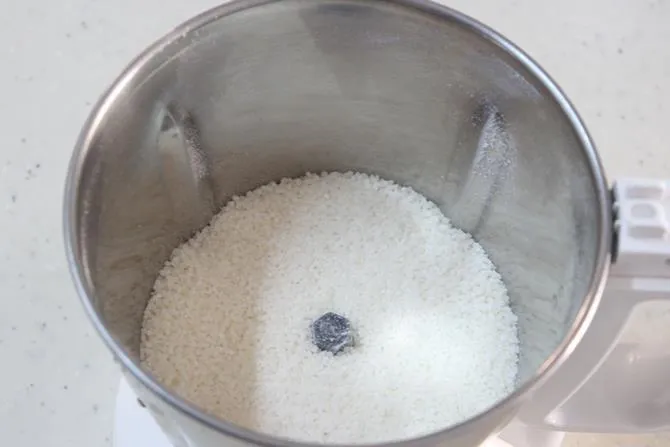
Preparation for Kudumulu
4. Wash and soak a handful of chana dal / senaga pappu for 15 to 20 minutes. To speed up, you can also soak in hot water for 10 minutes and use.
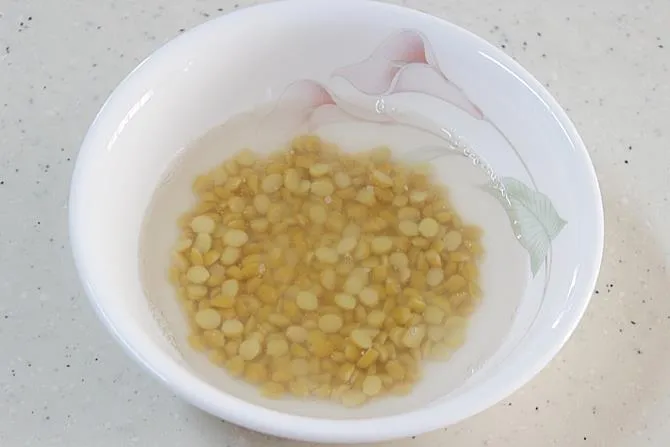
5. Add ghee to a hot heavy bottom pot. When the ghee melts, add the cumin seeds if using. I did not use here.
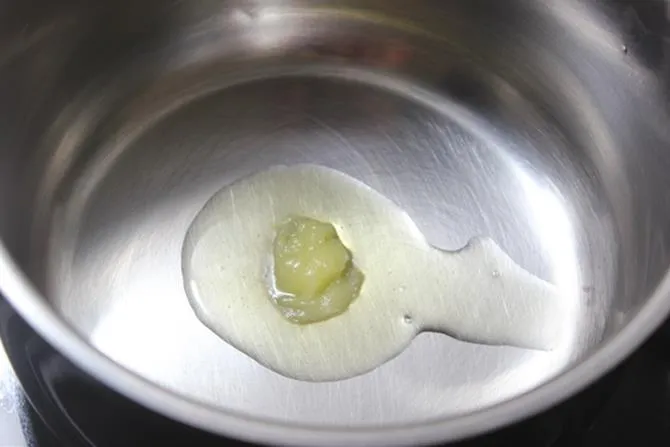
6. Drain off the water from dal completely and add to the ghee. Saute for 2 to 3 minutes until it turns fragrant.
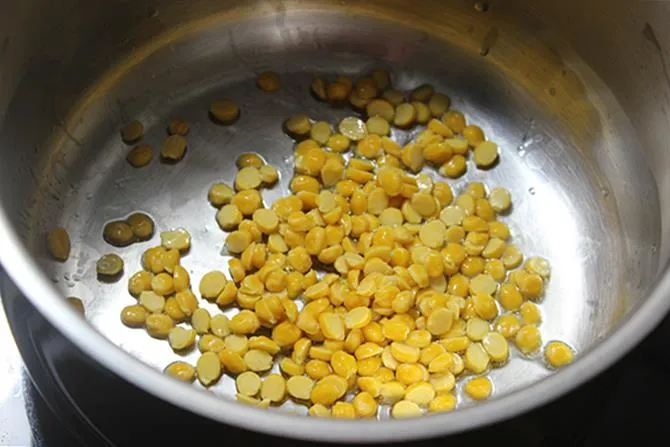
7. I used 2 cups of water and salt. Please refer notes for more details on water.
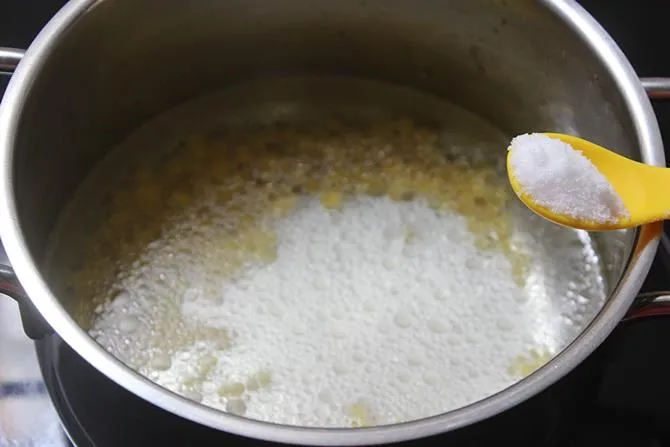
8. Bring it to a boil.
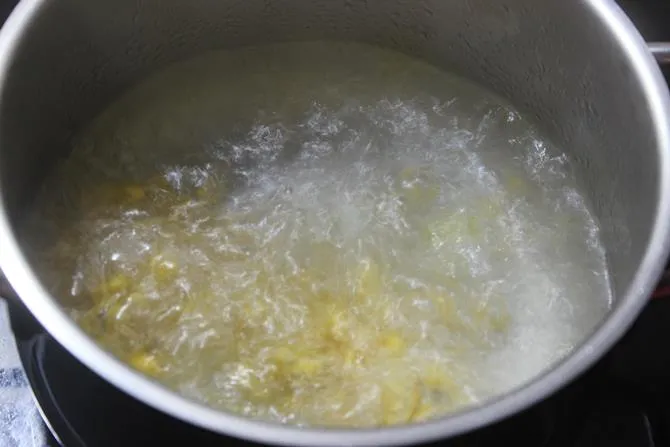
9. Reduce the flame to medium. Measure 1 cup rava. Pour it slowly with one hand and keep stirring with the other to prevent lumps.
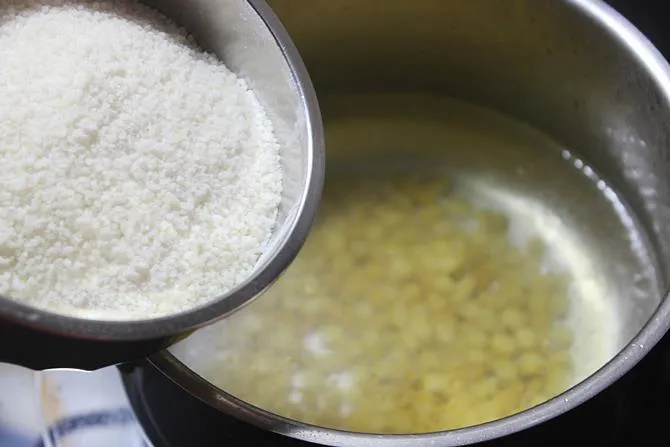
10. Simmer the flame. Keep stirring and cook.
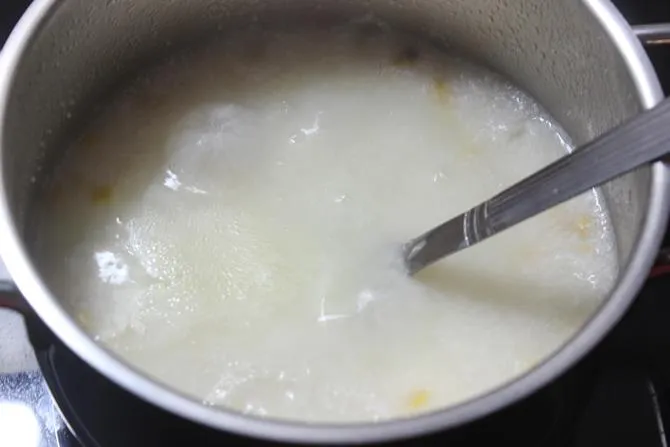
11. Cook covered as it begins to splash a lot.
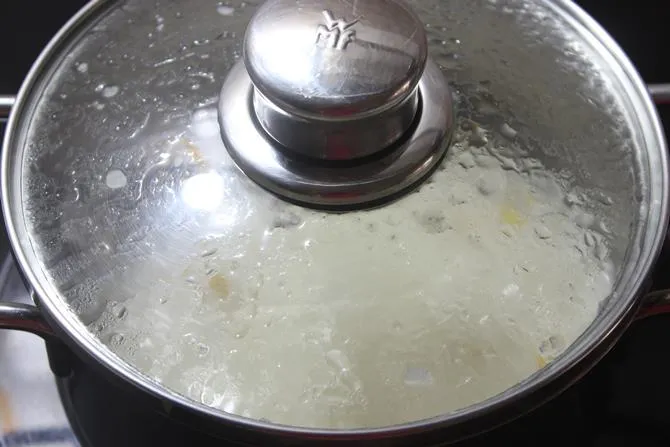
12. When the entire water evaporates. Open the lid.
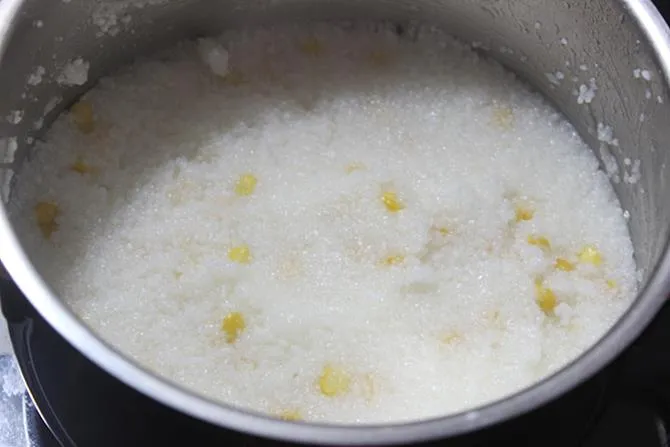
13. Mix well to prevent burning. Turn off. Keep covered and leave it on the stove top covered for at least 5 to 15 mins depending on the age of your rice. For aged rice, you might need to leave for 15 minutes.
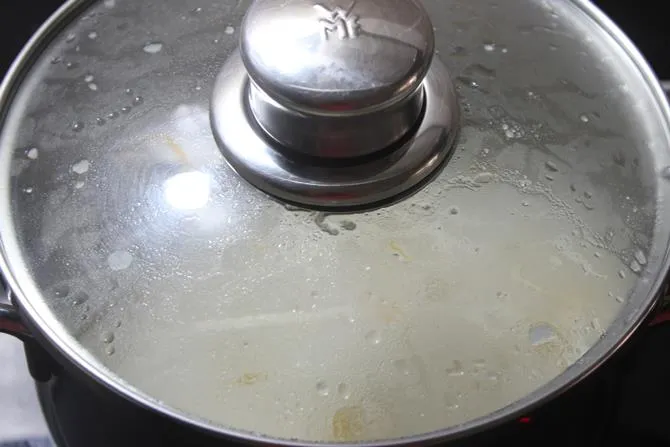
14. Transfer this to a wide plate and cool. When it reaches to a temperature you can handle, knead the dough once.
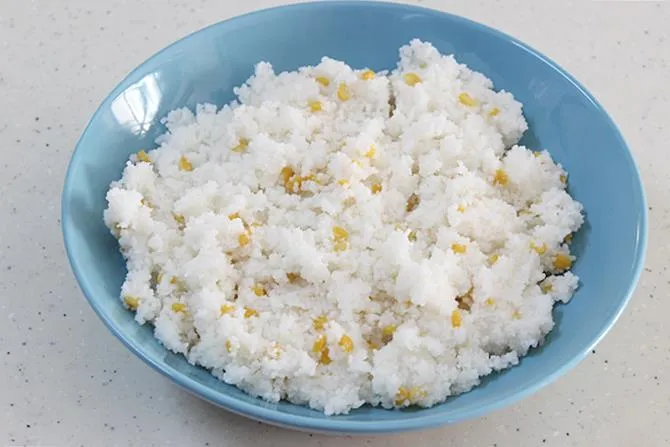
How to make kudumulu
15. Meanwhile place a steamer on stove with enough water (about 1 to 1.5 cups) to steam the balls, you can use a pressure pan or a cooker (without whistle) or a idli steamer or any kind of steamer.
16. Dip your fingers in water and take small portions of the mixture. Make small balls and place them in a wide steam basket or a bowl.
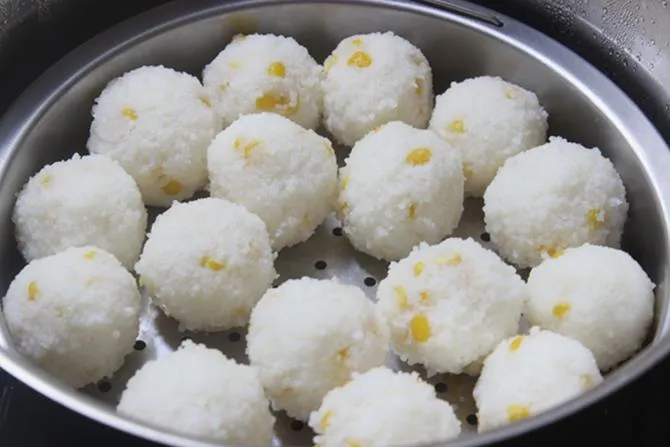
17. When the water starts to boil, place this steam basket/ bowl. Cover with a lid that has a steam vent. Steam them exactly for 8 minutes on a high flame. If using a large pressure cooker, you can steam for 10 minutes. Do not over steam else they will become hard.
Cool them completely and offer to Lord Ganesha or Lakshmi.
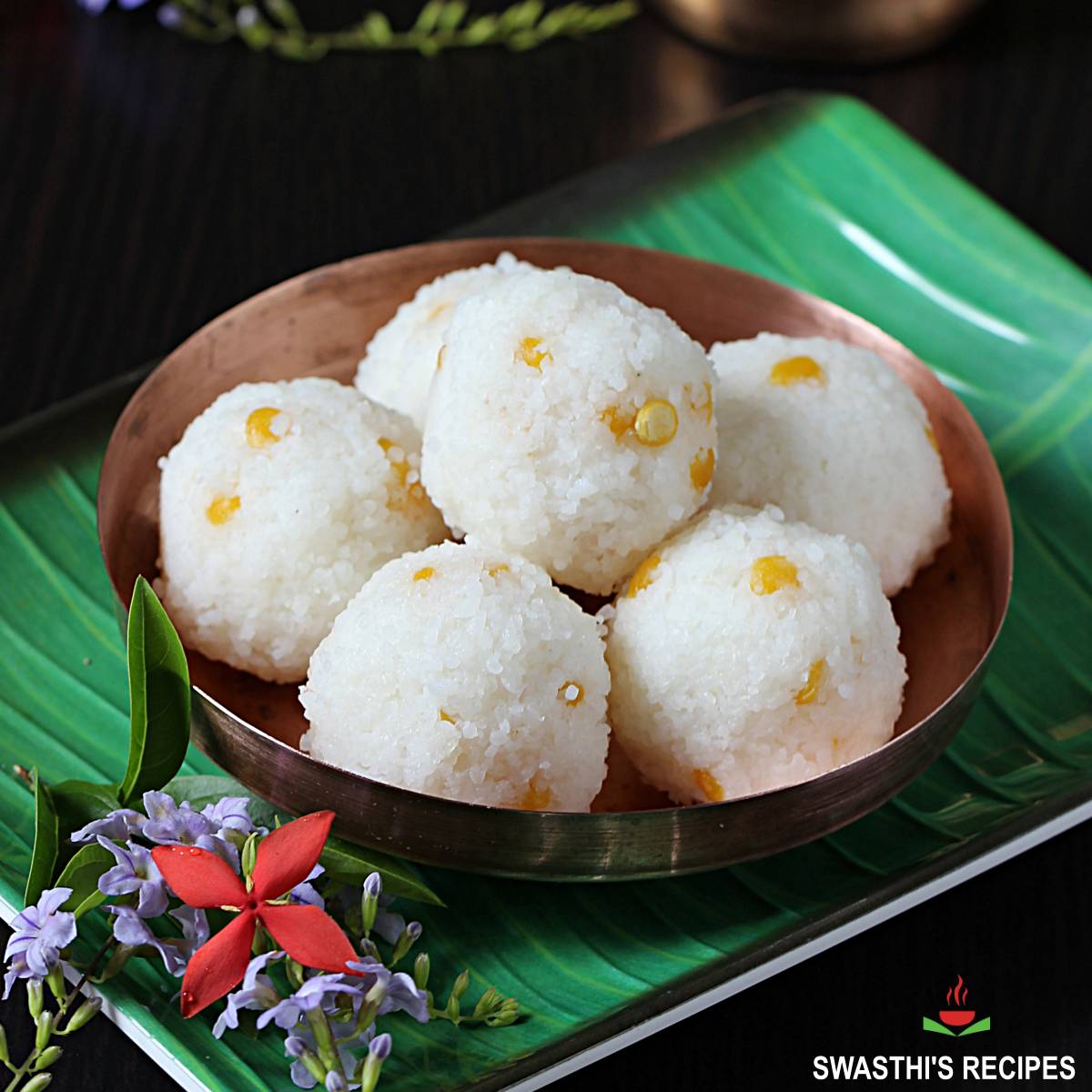
Related Recipes
Recipe Card
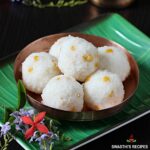
Kudumulu | Undrallu recipe | Vinayaka Chavithi Recipes
For best results follow the step-by-step photos above the recipe card
Ingredients (US cup = 240ml )
- 1 cup rice or rice rava or rice flour
- 2 to 2½ cups water (refer notes)
- 2 tbsp channa dal (senaga pappu)
- ½ tsp cumin seeds (jeera, optional)
- ¼ to ⅓ tsp salt or to taste
- 1 tsp ghee
optional – to make kobbari kudumulu
- ¼ cup coconut fresh grated
Instructions
Preparation – make rice rava
- Wash rice a few times and dry on a cloth. If you have enough time you can also soak for 2 hours, this helps to grind the rice easily.
- When the rice is completely dry, pour it to a blender jar and pulse it a few times to get coarse grains or rava.
- You can make it as fine or coarse as you like. I usually make it slightly more coarse than semolina or bombay rava. Dry this completely and store in a jar or use it.
- Please note that 1 cup rice will make more than 1 cup rava. This recipe is for 1 cup rava. Measure and use only 1 cup rava.
How to make kudumulu – undrallu
- Wash and soak chana dal in water for 15 to 20 minutes or for 10 minutes in hot water. Drain and set aside.
- Heat ghee in a pot. When the ghee turns hot, add cumin seeds if using. As soon as it sizzles add dal. Fry for 2 to 3 minutes.
- Pour water and add salt to pot. Bring it to a boil.
- Regulate the flame to medium. Measure 1 cup rava and pour it to the boiling water slowly in a stream, mixing well with another hand to prevent lumps.
- Cook till the water fully evaporates. Keep stirring to prevent burning.
- Cover the pot with a lid and simmer the stove for just 2 minutes or until the water evaporates completely. Take care not to burn. Switch off the stove.
- Optional – If using coconut add it now and mix.
- Leave it covered for about 15 minutes. Next transfer this to a wide plate and cool.
- Grease your palms or dip your fingers in water. Knead it well for a min or two.
- Dip your fingers in water and make 16 balls with the dough. Arrange them in a wide greased plate. You can also use a cloth in the plate.
Steam
- Bring 1.5 cups water to a boil in a pressure cooker or idli steamer.
- When the water begins to boil, steam them for 8 minutes on a high flame.
- If using a large pressure cooker steam for 10 minutes, a small pressure pan will need only 6 minutes.
- Cook kudumulu and offer to God Vinayaka.
Notes
You may need 2 to 2 ½ water depending on the age of the rice. If using aged rice it will absorb more water. If you are unsure about the amount of water to use, boil 2 ½ cups water. Set aside half cup. Cook the rava in 2 cups. If needed you can pour that as well.
You can use 1 ½ to 1¾ cups if using rice flour.
NUTRITION INFO (estimation only)
© Swasthi’s Recipes
About Swasthi
I’m Swasthi Shreekanth, the recipe developer, food photographer & food writer behind Swasthi’s Recipes. My aim is to help you cook great Indian food with my time-tested recipes. After 2 decades of experience in practical Indian cooking I started this blog to help people cook better & more often at home. Whether you are a novice or an experienced cook I am sure Swasthi’s Recipes will assist you to enhance your cooking skills. More about me
Follow Swasthi’s Recipes

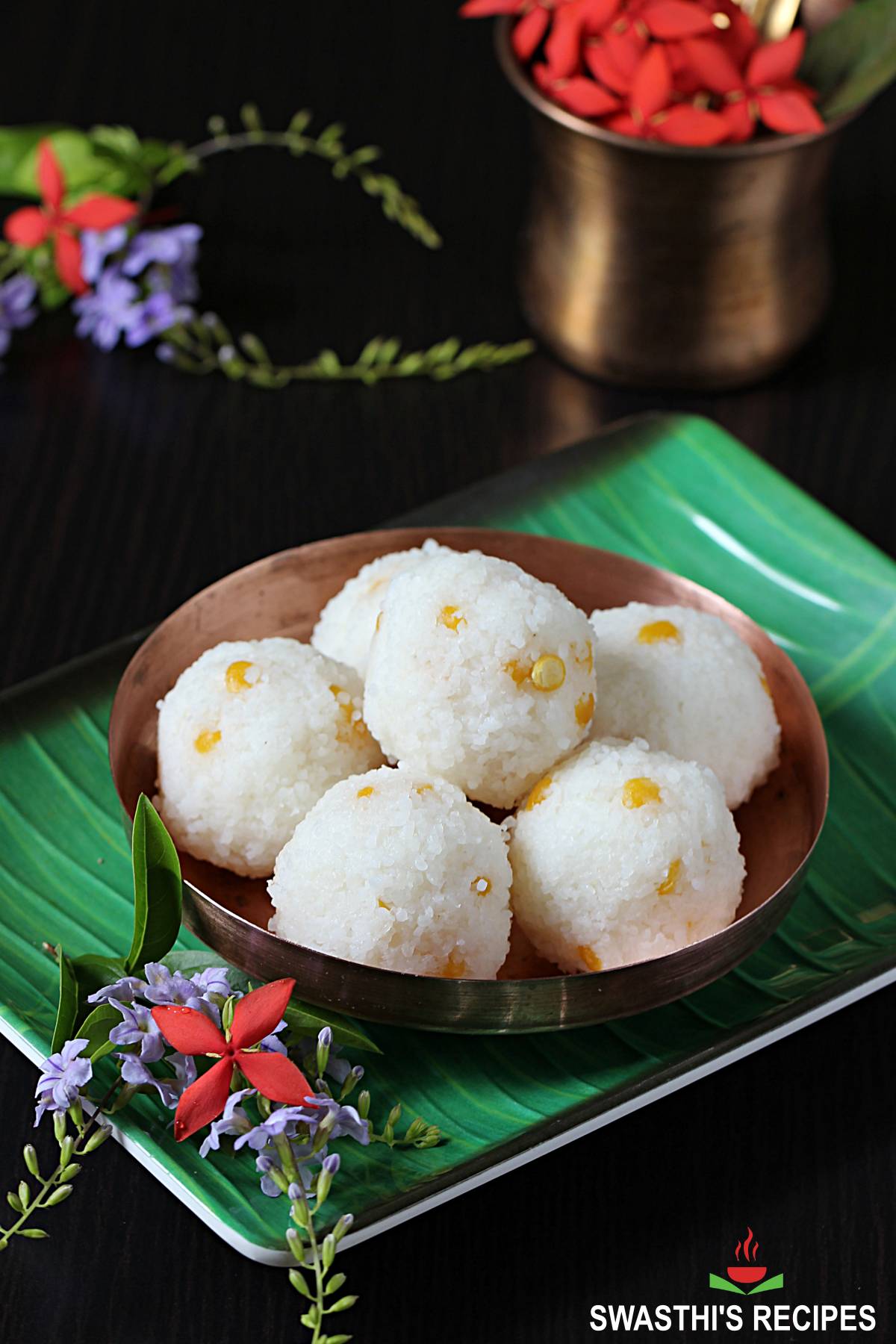
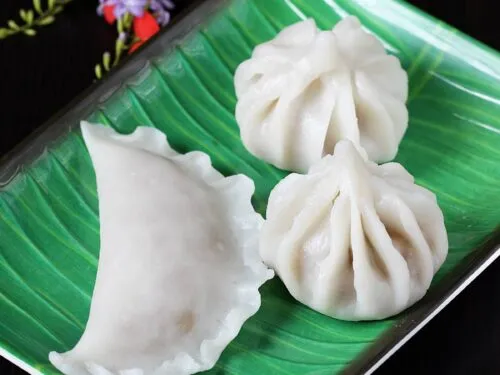
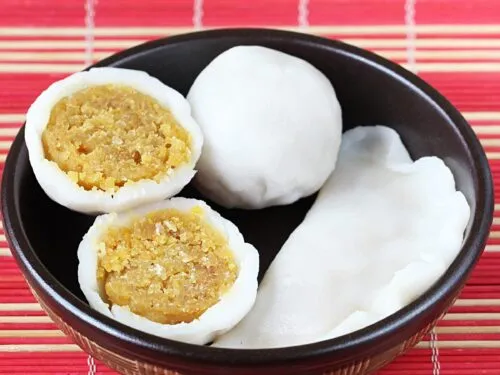
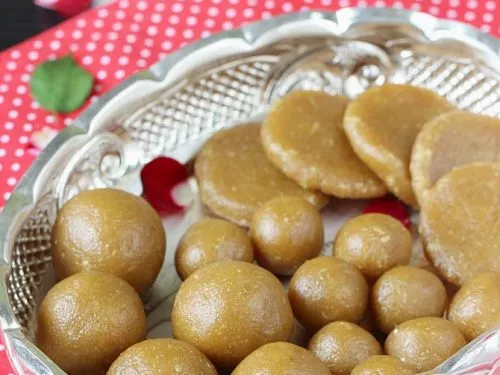
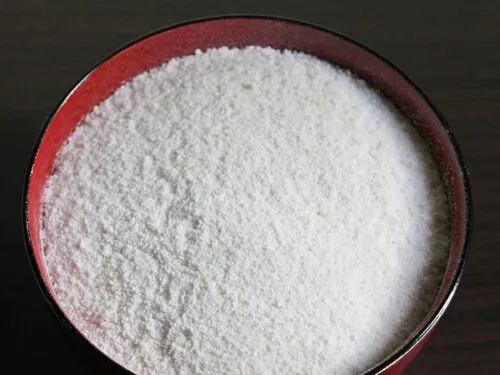
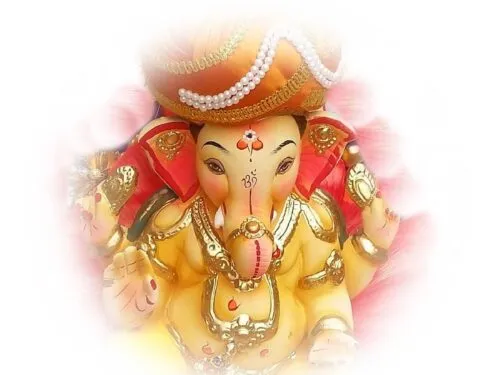
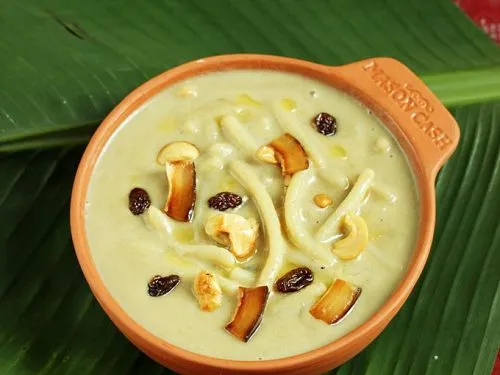
Comments
Hello, Your recipes are perfect, thanks. Idlis and dosas are delicious. However, there is room to increase the nutritional value. Effort vs nutritional value of Indian food is not encouraging. How can we enhance the nutritional value of these items, especially for vegetarians?
What kind of chutney or sambar do you eat the kudumulu with?
Your recipes are foolproof and perfect. Thanks much.
Welcome Asha.
Mango pickle or any other pickle along with rasam or sambar is best. They go well with any spicy chutney. Here are a few
Coconut chutney
peanut chutney
onion chutney
Looks perfect.
Thanks Aruna. Hope you get to try!
Excellent….nice explanation….❤
Thank you Kalyani
Thank you so much for the recipe. Gonna try them soon. I’ve a doubt. Jeera was mentioned in the recipe card but not in the steps. If we’re gonna use when should it be added?
Jyo,
Add it to the hot ghee and let it sizzle. Then add the chana dal
Thank you so much andi. Tried it for the first time today and I liked them. 🙂
Glad to know Jyo!
Thank you
If I am making the Rava today. Should I dry it in sun and put In a box. Or can I keep it on the fridge without drying.
Hi Gayitri
You should dry it completely otherwise it may smell bad even if you refrigerate. I usually air dry it for several hours and store at room temperature.
Thanks for sharing this recipe. I tried it this ganesh chathurthi. Followed the recipe to the letter. It was perfect!
Welcome,
Glad to know they turned out good.. Thanks for the feedback
This is exactly the way we make at my mils home. Thanks for the measures going to try this for festival
Welcome Nalini,
would love to know how they turned out. Thank you
Thanks for the share Swasthi, rice flour undrallu is exactly how my mom used to make and she has passed on the recipe to her daughters:)
Thank you Nirmala 🙂
WOW PERFECT CLICKS PERFECTLY MADE…YUMM
looks perfect undrallu…<br /><br />Ezcookbook<br />ongoing Event -Let's Party – Prasadam / Prashad Special
Wish to grab few from your picture dear, So yummy. Very new to me. Perfectly presented.
nice presentation swasthi..
Yummy undrallu, looks perfect.
Looks perfect and yum..love it..
wow feel like garbing it from the screen…so tempting dear…
Healthy snack for sure.
thank you for linking this wonderful prasadham recipe to the event…
hi swasthi,<br />undrallu looks super ,love the way u explained it…happy to follow u